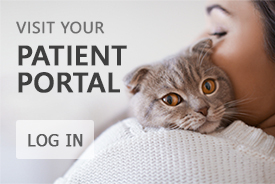Doggy Bloat

a vet technician gets a patient ready for her shots
We’ve all heard of bloat in cows, but did you know that dogs can also get bloat? Gastric Dilatation and Volvulus (GDV) is a condition that occurs in large and giant breed dogs, where the stomach becomes filled with air and twists on itself. A milder version is Gastric Dilatation, where the bloating happens but not the twisting.
It may sound crazy and impossible but it is not uncommon in middle aged to older dogs of large and giant breeds such as Great Danes, Rottweilers, Labradors, among many others. In fact, it was this condition that finally got the better of that loveable famous Labrador in the book turned movie ‘Marley and Me’!
So what happens when that stomach fills up with air and twists? Well, the pressure in the abdomen increases very quickly and this pressure can affect blood flow in some of the major blood vessels that run through the abdomen. The stomach wall itself is also affected by that intense pressure, and the tissue of the wall starts to die off. As the stomach wall dies off, toxins are released. In a nutshell, the dog becomes very, very sick, very quickly. If left untreated, the outcome is a tragic, painful death.
Symptoms include a bloated abdomen, lethargy, attempts at vomiting/retching and/or collapse. This is an emergency situation, and the dog should be taken to the nearest veterinary emergency service immediately. Unfortunately, many doggies do not survive this condition, and the sooner they are treated, the better chance they have.
If you own an at-risk breed of dog, there is a simple surgery that can be done at the time of neutering that involves tacking the stomach to the abdominal wall to prevent twisting. Highly strung or nervous dogs are more at risk of this condition. Other factors that increase the risk of GDV are feeding immediately before or after exercise (leave at least 30 minutes between feeding and exercise), and feeding the dog at a height (the food bowl should be kept on the floor). If you own a large or giant breed dog, speak to your veterinarian for further advice.
The post Doggy Bloat appeared first on Pet Assure Blog.
 Posted by dvmgalaxy
Posted by dvmgalaxy- Posted in Uncategorized
 Oct, 25, 2017
Oct, 25, 2017 Comments Off on Doggy Bloat
Comments Off on Doggy Bloat

 (770) 545-8077 | Fax: (770) 450-8573
(770) 545-8077 | Fax: (770) 450-8573


